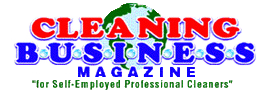Reducing Slip and Fall Accidents
Sometimes slip and fall accidents are caused by slippery surfaces; at other times, by shoes slicked with moisture, grease, soap, etc. No matter what the cause, falls follow only vehicular accidents as the leading cause of work-related deaths.
Work-related accidents create major costs for employers, equipment manufacturers, and construction companies, as well as the employee who is injured. Work-related injuries cost more than $111.9 billion in 1993, including wage and productivity losses, medical expenses, and employer costs. To put this in perspective, a year’s worth of work injuries is equivalent to a $160,155 bonus for each police officer and firefighter in the United States.
The statistics are alarming. More than 14 percent of work-related injuries are caused by falls, and in 1991 alone 466 people died due to slips, trips, and falls.
Slip and fall injuries can occur in a variety of environments. Conditions contributing to slip and fall hazards are everywhere, from modern office buildings to nursing homes. Deaths from accidental falls are on the increase, especially among the elderly. With the lives and safety of employees, customers, and clients at risk, it is important to recognize steps to reduce slip and fall accidents.
National Safety Council Steps To Prevention
The National Safety Council has developed a four-step approach to slip and fall prevention to achieve safety in the workplace and other high-traffic environments.
Step One: Spot Hazards In Advance
Pay special attention to busy areas where accidents are most likely to occur. Wet surfaces are one of the main causes of on-the-job falls. Food preparation areas, bathrooms, and building entrances are examples of potentially hazardous areas. By installing slip-resistant matting or treads, traction is increased, thus reducing the slip hazard. The National Safety Council also recommends using non-skid floor finish to decrease the slippery nature of bare floors.
Weather factors can also contribute to slip and fall hazards. Snow, sleet, or rain can provide just enough of a coating on outdoor ramps or stairs to induce an accident. Slip-resistant surfaces can help pedestrians gain a better foothold in these conditions. Traction tread can be placed on inclines or stairs to improve friction.
It is important to keep all aisles, hallways, and stairs clean and free of obstacles. For example, clear boxes or other clutter from pathways. More than one-third of falls are the result of poor housekeeping.
Step Two: Steer Around Hazards
If there is a visible hazard, take extra time and caution maneuvering around or through it. Look carefully before taking steps, not only to avoid a spill, but also to prevent getting a slick substance on shoes.
Step Three: Alert Other
s
Making others aware of hazards helps prevent future slip and fall accidents. If possible, repair the hazard. If not, call attention to the location of the hazard so that it can be marked and repaired. Quickly and efficiently cleaning up or fixing a hazard aids in the prevention of future accidents.
Step Four: Choose Appropriate Footwear
Choose footwear that is appropriate for the working environment. For example, leather soles provide enough traction for wood floors, but are not a good option for tile or concrete. Safety (non-skid) soles are available to handle nearly every traction hazard. When walking through or around slippery hazards, take shorter steps to help maintain balance. Taking long strides may allow more ground to be covered, but it also increases the risk of slipping.
After tracking through a potentially slippery hazard, like water or chemicals, clean the soles of your shoes so they will continue to provide traction on every floor surface.
Maintaining Safety
National organizations are encouraging higher levels of safety in the workplace. OSHA requires a safe, non-slip workplace and has penalties for businesses not complying to these standards. Enforcement includes detailed inspections of facilities, fines for safety violations, and even imprisonment.
Through the efforts of architects, builders, and construction planners, safety in design is becoming a standard instead of a specialty. Whether it is improving the lighting in a plant’s stairwell or placing slip-resistant material on a nursing home’s wheelchair ramp, prevention is a current trend businesses can’t afford to disregard.
Slip and fall accident reduction depends upon each person, from the pedestrian walking around a hazard to the building designers creating a safe work environment. Future slip and fall accidents can only be prevented through each individual’s continued actions promoting safety.
(This article is reprinted from our August 1996 issue, and is contributed by 3M News.
3M manufactures slip-resistant matting and tread products. For details, call Katie at 612-338-0901 or Bonnie of 3M Commercial Care Division at 612-736-1333.)
















